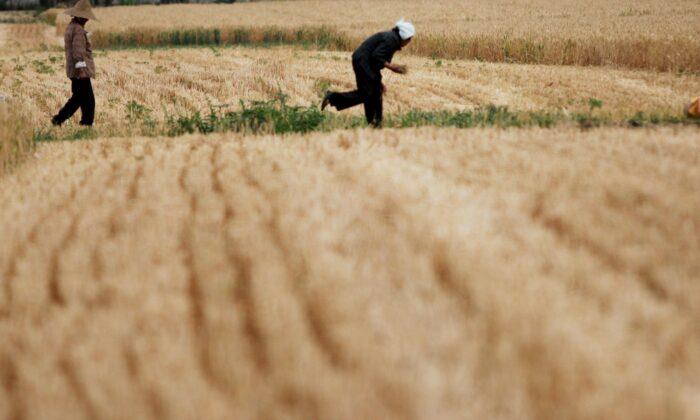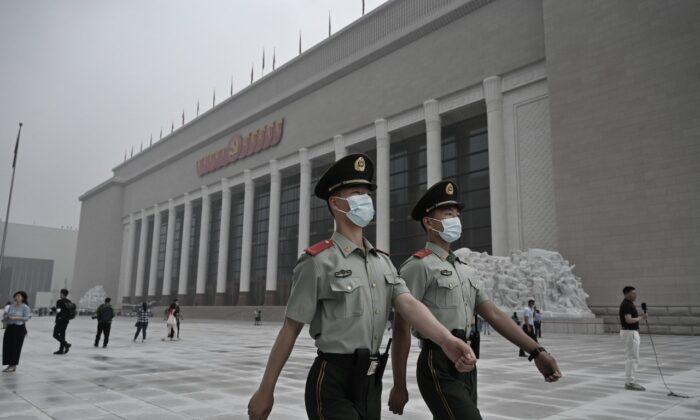In August 1918, a woman shot and nearly killed Soviet leader Vladimir Lenin as he toured a factory in Moscow. The assassin was Fanya Kaplan, a disgruntled socialist whose political party had been banned earlier that year by Lenin’s Bolshevik communists.
Before her execution several days later, Kaplan said she acted alone. But there were many who shared her grievances. The Bolsheviks had quickly established dictatorship less than a year before, in the 1917 October Revolution. They ceded vast territories to Germany in exchange for peace, and dissolved the country’s first experiment with democratic rule.
These betrayals angered many communists and other left-wing revolutionaries of all stripes who assisted Lenin’s rise to power, starting with the uprisings in early 1917 that toppled Russian Czar Nicholas II.
Now, at least insofar as the creation of Marxist dictatorship was concerned, those non-Bolshevik revolutionaries had outlived their usefulness. After several uprisings by a smattering of socialist groups, and shortly before being shot by Kaplan, Lenin declared that a “ruthless mass terror” was needed to cleanse the movement.
And the terror would come, not just under Lenin’s rule, but for decades after his death—from the Soviet Union to Eastern Europe, China, Korea, and every other country unlucky enough to fall under the rule of a communist party.
Building the Soviet Police State
Russian governments before the communists had their own secret police organizations, such as the feared oprichnina of Czar Ivan the Terrible (1530–1584), who suspected the wealthy aristocracy of plotting to overthrow him.And in Lenin’s day, safeguarding the revolution and cementing its violent ideology went hand in hand with state terror. Just a few weeks after the October Revolution in 1917, the Bolshevik Party established the Emergency Committee, better known as the Cheka after the pronunciation of its Russian abbreviation.
Its head was the Polish noble Felix Dzerzhinsky, a gaunt, fanatical man who had converted to socialism and then to communism in his youth. With just a few hundred members in 1917, the Cheka quickly expanded as the Bolsheviks stepped up the war against the “White” Russian armies and encountered intense and increasingly violent dissent among their fellow communists. Within two years, the secret police organization had around 200,000 staff.
Dzerzhinsky himself had been a Bolshevik for just a few months since defecting from another Red faction, but the organization he created would become a permanent and unfailing fixture of the Soviet regime until its collapse in 1991.
The Red Terror
The attempt on Lenin’s life in August 1918 was a catalyst for the hundreds of thousands of executions the Cheka is estimated to have carried out from 1918 to the early 1920s.“We stand for organized terror—this should be frankly admitted,” Cheka head Dzerzhinsky said in July 1918. “Terror is an absolute necessity during times of revolution. … We judge quickly. In most cases only a day passes between the apprehension of the criminal and his sentence.”
Dressed in signature leather overcoats, Cheka agents followed Bolshevik armies, rounding up suspects who had been captured including landowners, the nobility, business owners, and even those simply found loitering after curfew hours. This routine was followed by mass executions.
As early as 1924, escaped Russian historian Sergei Melgunov revealed in his book “Red Terror in Russia” the systematic killing, providing both documents and photographs. The Cheka itself released reports proudly announcing partial numbers of the dead. In many regions, every crime—real or imagined—carried the death sentence.
Of the killing, Melgunov says: “the number of names published was a good deal smaller than the reality. Also, when the Bolshevists were setting about their disorderly flight, they told the workers that if they (the workers) did not come with them they (the Bolshevists) would, on their return, hang every worker who had remained behind to a telegraph pole.'”
The actions of the Cheka followed the overall communist philosophy of class struggle and the abandonment of morality and human dignity, and declared anything that opposed these ideas was counter-revolutionary. Victims or family members were often forced to undress before being led out to be shot. Other prisoners were forced onto barges, taken out to sea, and drowned when the Bolsheviks scuttled the ships.
As Melgunov notes: “In Kiev it was the practice to make the condemned prostrate themselves amongst the curdled blood on the floor before being shot through the back of the head, or brain.”
Aside from summary execution, the Chekists also relished in torture and rape. An article from the period says:
Tortures in these districts [Ekaterinodar and Kuban] are both physical and mental. And Ekaterinodar has a particular method of their application, as follows. The victim is laid upon his back on the floor of his dungeon, whilst two burly Che-Ka employees tug at his head, and two others at his shoulders, until the muscles of his neck are absolutely stretched and taut. Then a fifth man falls to beating the victim’s neck with a blunt instrument—usually the butt-end of a revolver—until, the neck swelling, blood gushes from the mouth and nostrils, and frightful agony is suffered.Women prisoners who caught the fancy of the secret policemen were raped before being killed, and condemned men were ransomed in exchange for sexual servitude from their female relatives. Typically the prisoners were killed anyway.
In some areas of southern Russia, local Cheka officers would hold orgies composed of female prisoners, using such euphemisms as “communization of women” or “days of free love.”
Melgunov recalls:
A witness whom I have already quoted in connection with events in the Crimea told the Lausanne Tribunal that each of the sailors active in that region possessed four or five mistresses, and that in most cases the poor women were wives of massacred or escaped officers, since rejection of the sailors’ overtures meant execution, and only a few stronger-minded ladies were able to muster up sufficient courage to solve the problem by suicide.
A ‘Communistic Pattern of Thinking and Reacting’
Over time, the intensity and cruelty of the killings in the Red Terror affected the Cheka executioners. Melgunov writes:At all events, it stands beyond doubt that for a while the lunatic asylums of Russia registered large numbers of cases of a disease which became known as ‘executioner’s dementia,’ owing to its tendency to render its subjects a prey to real or imaginary remorse for bloodshed done, and to the most harrowing hallucinations.But for the communist regime, killing had become a valuable tool for keeping the population in line. After Lenin died in 1924, the Cheka would be renamed multiple times but serve a roughly similar function. Joseph Stalin, who replaced Lenin and continued his dictatorship, hailed Dzerzhinsky as “a devout knight of the proletariat” upon the latter’s death in 1926.
Political repression in the Soviet Union would reach its height under Stalin and the series of purges known as the Great Terror. Hundreds of thousands of the victims would be Dzerzhinsky’s Polish compatriots.
In 1919, Lenin reportedly paid a secret visit to Ivan Pavlov, the psychologist famous for his experiments on training conditioned stimuli in dogs. According to British historian Orlando Figes, the Soviet leader said: “I want the masses of Russia to follow a Communistic pattern of thinking and reacting.”
“Do you mean that you would like to standardize the population of Russia? Make them all behave in the same way?” a surprised Pavlov replied.
“Exactly,” Lenin said. “Man can be corrected. Man can be made what we want him to be.”
Communism is estimated to have killed at least 100 million people, yet its crimes have not been fully compiled and its ideology still persists. The Epoch Times seeks to expose the history and beliefs of this movement, which has been a source of tyranny and destruction since it emerged. Read the whole series at ept.ms/TheDeadEndCom





